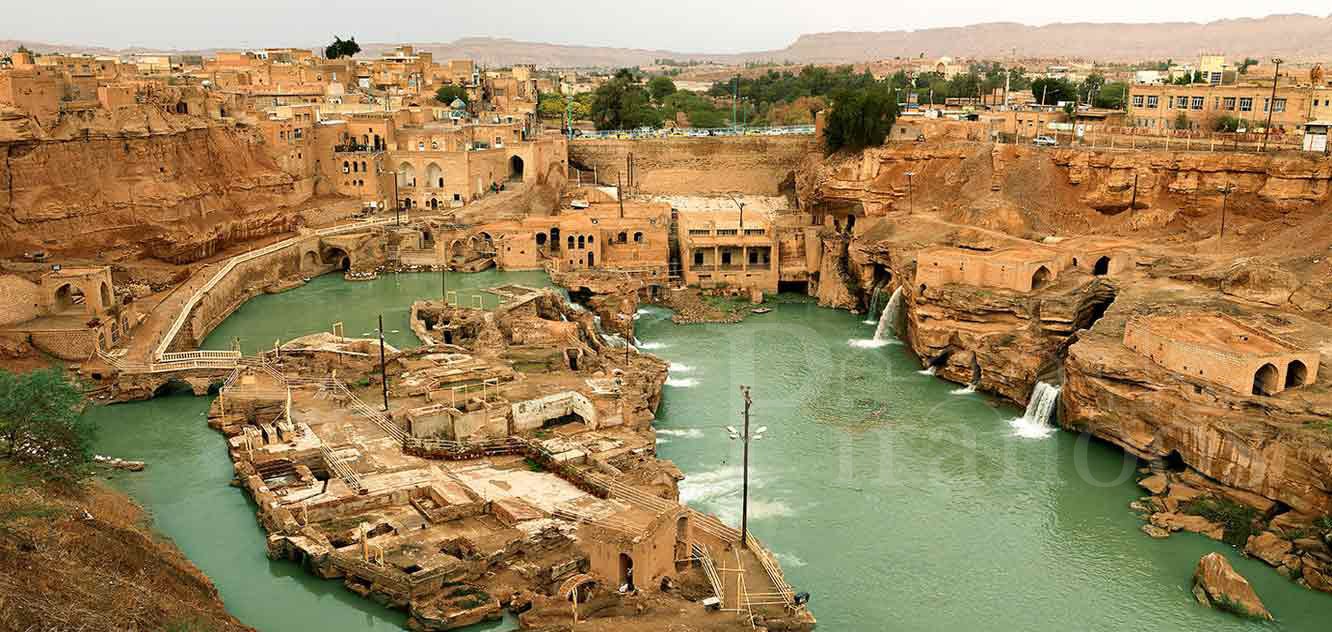A huge and complex water structure was built in Shushtar during Sassanid era which is comprised of interconnected bridges, dams, water mills, waterfalls, canals, and large water tunnels (built during the Achaemenid era). The structure now known as the Shushtar historical hydraulic system has been referred to as “a masterpiece of creative genius” by UNESCO. Homogeneously and globally designed and completed in the 3rd century, construction of this hydraulic system in addition to its diverse engineering had and has various uses such as supplying water to urban areas and mills, irrigation and river transport. It also acted as a defensive system where the deflected channel from the Karun River formed a moat around the city.


In a sense, construction of the system was initiated during the Achaemenid era (550-330 BCE). Darius the Great built two diversion creeks on the Karun River for trade and commerce. One of which was a 30 meter deep navigable creek now called Gargar River. The river separates from the main tributary of the Karun River in the north of Shushtar and rejoins it in Bandagir village south of Shushtar. The Gargar River is still in use providing water to Shushtar through a series of tunnels that supply water to mills and form a spectacular cliff from which water cascades into a pool. It then flows to the 40,000 hectare plain of Minab (Paradise) where the operation hub of the hydraulic system (the Salasel Castle), the water level measuring tower, dams, bridges, basins, and mills are located.
